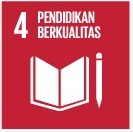


22 November 2024 – The recently concluded research comparing the linguistic landscapes of Malacca, Malaysia, and Yogyakarta, Indonesia, has provided valuable insights into the relationship between language, cultural identity, and urban heritage. Conducted between January and October 2024 under the research roadmap of Gadjah Mada University, this project explored how the languages displayed in public spaces reflect the emotions, perceptions, and cultural identities of the communities in these historic cities. The findings offer a rich understanding of how linguistic landscapes not only document cultural heritage but also shape the future of urban development.
Drawing on data collected from Generation Z respondents through interviews and questionnaires, the study examined perceptions of linguistic elements found in the streets of historic Malacca and the landmarks along Yogyakarta’s cosmological axis. These young participants provided a unique perspective, reflecting the voices of a generation navigating both tradition and modernization. The data, processed using NVivo 19 software, revealed fascinating patterns of language use, symbolic representation, and emotional resonance in the linguistic landscapes of both cities.
One of the central findings was the presence of universal themes linking the two cities. Both Malacca and Yogyakarta showcased a profound connection between linguistic elements and cultural identity. Traditional scripts, such as Javanese in Yogyakarta and Chinese characters in Malacca, were often described by respondents as symbols of cultural pride and continuity. These scripts, prominently featured on shop signs, street names, and public notices, represented the historical narratives of the cities and served as reminders of their multicultural legacies. Respondents consistently emphasized how these linguistic elements evoke a sense of belonging, nostalgia, and respect for their heritage.
Despite these similarities, the research also uncovered unique traits that distinguish the linguistic landscapes of Malacca and Yogyakarta. In Malacca, the interplay of Malay, English, and Chinese elements highlighted the city’s colonial past and its role as a trading hub. Respondents noted that the mixture of languages in street signs and advertisements reflected the city’s vibrant multicultural identity, yet also raised questions about the dominance of certain languages in public spaces. For instance, the growing prevalence of English in modern signage was seen by some as a symbol of globalization but by others as a potential threat to local traditions. In contrast, Yogyakarta’s linguistic landscape stood out for its strong emphasis on the Javanese script, particularly in the landmarks aligned with the city’s cosmological axis. These inscriptions were seen not only as decorative elements but as deeply meaningful symbols connecting the present-day city to its spiritual and historical roots. The respondents in Yogyakarta often described the use of Javanese script as a form of cultural resistance and a statement of identity in the face of rapid urbanization.
The emotional and perceptual responses collected during the study further underscored the importance of linguistic landscapes in fostering community identity. For many respondents, the language displayed in public spaces was not merely functional but deeply symbolic. In Malacca, signs bearing traditional Malay or Chinese elements evoked a sense of pride in the city’s maritime history and multicultural achievements. Similarly, in Yogyakarta, the integration of Javanese symbols in everyday spaces reinforced a collective spiritual connection and a shared commitment to preserving local traditions. This emotional attachment suggests that linguistic landscapes are not just passive reflections of a city’s identity but active participants in shaping how communities perceive themselves and their heritage.
The research also highlighted the dynamic interplay between modernization and preservation within linguistic landscapes. Both cities are experiencing rapid urban development, which has led to tensions between embracing contemporary branding and retaining traditional cultural elements. Respondents expressed concerns about the diminishing visibility of local languages in favor of global ones, particularly in commercial spaces. This trend was seen as a potential risk to the authenticity of the cities’ identities. However, the findings also revealed opportunities for innovation, suggesting that urban planners and policymakers could integrate traditional linguistic elements into modern designs to create spaces that respect both historical narratives and contemporary needs.
In conclusion, this research has demonstrated the pivotal role of linguistic landscapes in reflecting and shaping the cultural identities of historic cities. By amplifying the voices of Generation Z, the study has provided a glimpse into the future of cultural preservation and urban development in Malacca and Yogyakarta. The findings serve as a call to action for local governments, urban planners, and cultural stakeholders to prioritize the integration of linguistic heritage into sustainable urban policies. As these two cities continue to evolve, their linguistic landscapes will remain powerful tools for fostering cultural resilience and community engagement, ensuring that their rich histories remain relevant and inspiring for generations to come.
Penulis: Ahmad Muam
